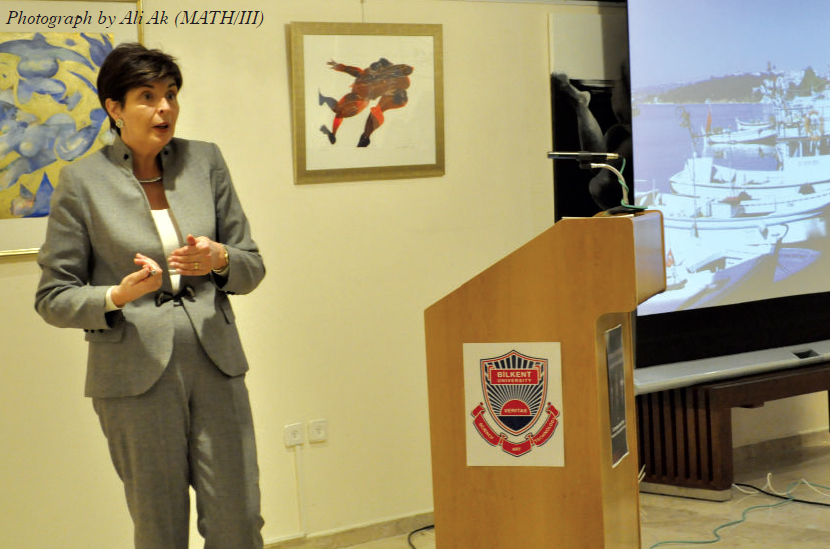Amphorae and the Black Sea Coast
On Thursday last week, Assoc. Prof. Dominique Kassab-Tezgör from the Department of Fine Arts delivered an interesting and colorful talk entitled "Pottering along the Black Sea: Sinope and its Ceramics Workshops" in the Main Campus Library Art Gallery as part of the Library Lunchtime Lecture series. Many students and instructors braved the cold and rainy weather to listen to Dr. Kassab-Tezgör describe her work on the manufacture of amphorae during the Roman and early medieval periods at what is now Sinop. Amphorae are clay vessels designed to transport wine, olive oil, and sometimes fish in the ancient world, and Sinope was one the main centers of production.
Dr. Kassab-Tezgör began her talk with a discussion of the etymology of the name "Black Sea," and then said a little about the town of Sinope during Antiquity, home to - among others - the Greek philosopher Diogenes the Cynic. The location of Sinop on a promontory made it one of the two safe harbors on the Black Sea Coast and therefore well suited to trade. During the 1990s, Dr. Kassab-Tezgör headed an excavation of a ceramic workshop located a few kilometers south of the town itself. This workshop was active during much of the Roman period but seems to have ceased working in the seventh century A.D., when it was replaced by a wine or olive press. This workshop, which probably had at least 10 kilns and its own harbor, was a major center of amphora production, with its amphorae found not only in the Black Sea region but also in the eastern Mediterranean and perhaps in Italy. Over time, both the design and the color of the amphorae changed. For example, they were made using local clay that, depending on the time in the kiln, would turn from red to white. Analysis of the clay was achieved thanks to collaboration with the Department of Chemistry at Bilkent.
In May 2009, Dr. Kassab-Tezgör organized an international symposium "Sinope: The Results of Fifteen Years' Research" with participants coming from Turkey, Georgia, France, the U.K., and the United States. The project also led to the reconstruction of the kiln by Bilkent students to record this important workshop before the site itself is lost due to erosion. Dr. Kassab-Tezgör concluded her lecture by sharing some images from the later history of Sinop, especially of the beautiful wooden houses from the Ottoman period.
This talk was the last library lecture for this semester. The series will continue again in the spring with another varied program of talks.